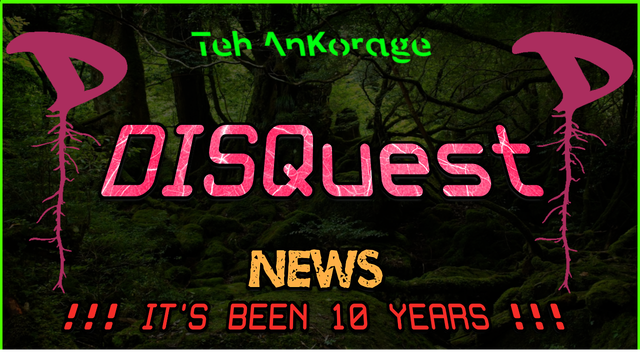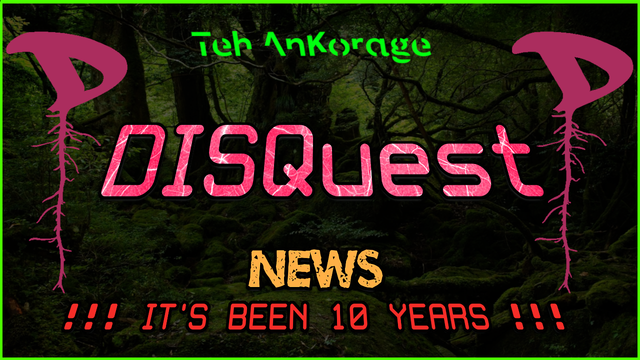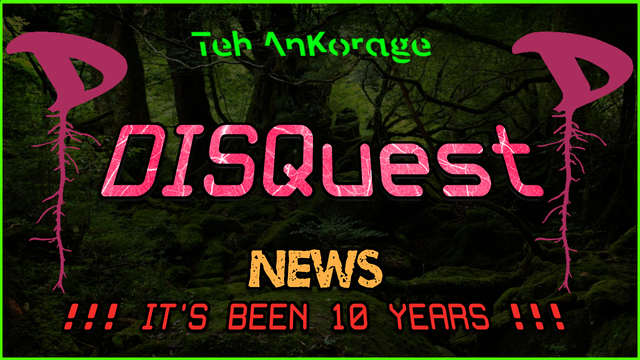albeit late, happy birthday Disroot! @disroot
#disroot
what #disroot, #systemli, and #riseup did that made me build a similar collective. currently running some services under #openbsd from #indonesia:
- #prosody (#xmpp server)
- #dovecot, #opensmtpd, #rspamd (email server)
- openbsd environemnt (through ssh)
- nginx (web server)
- #unbound, #nsd (#dns server)
but, i ponder what i must do to pass the #security and perfomance standard.
can someone answer my question? i appreciate it so much
Wooo, finally cooking with automatic-website-rebuilds-on-merge! Even just a day in, having one less manual step to do when trying to make updates has been huge for tinkering.
Who needs GitHub or Vercel or AWS or whatever trash they're selling you, when you can have: 1) #11ty, 2) #NearlyFreeSpeech.NET, 3) a git repo on a smaller #Forgejo instance, and 4) a mid-week hyperfocus stint?
https://www.mostol.dev/post/202509172307/
#SmallWeb #PersonalSites #indieweb #selfhosted #Disroot
Seit wirklich sehr vielen Jahren habe ich jetzt wieder einen Mail-Account auf meinem Smartphone, weil auf diesem Account ausschließlich persönliche Mails ankommen (sollen).
Allerdings auch nur wenige, weil die meiste Kommunikation ohnehin über Messenger läuft.
Und ich habe endlich einen Sinn für die kleine Cloud gefunden: Photo-Sync 😁
Und der "Ausweich-Account" hier im Fedi läuft ja auch über:
#Disroot #Empfehlung
#disroot hi 👋🙂 I’m new here! Please I’d like to use Disroot services but I can’t find the VPN one. Doesn’t Disroot include VPN?
Thank you
Hoje exportei minha agenda do Google para um arquivo .ics e o importei na agenda (Calendar) do Disroot.
Tudo funcionando pelo navegador e Thunderbird do PC.
Já no Android, que parto! Segui as instruções do link abaixo. Mas ou por algum bug ou instabilidade, não consigo completar a autenticação (um daqueles procedimentos chatos em que o app chama o navegador para fazer login), esteja eu previamente logado ou não. Fica para uma outra oportunidade ¯\_(ツ)_/¯
Por essas e outras, o smartphone vai ficando de canto e cada vez mais uso o dumbphone.
https://docs.nextcloud.com/server/latest/user_manual/en/groupware/sync_android.html
DisNews 25.08 - Ten years of #Disroot
When Disroot began to take shape back in 2015, the world seemed to be heading in a different direction. People were talking about climate agreements, building alternatives... and riding that same wave — almost as a necessary reaction — Disroot was born: our modest but determined attempt to offer digital tools that do not sell our privacy, freedom and choice to the highest bidder. Now 10 years in and looks like the world has gone on the downward spiral. Privacy seems to be a term of the past. Sponsored content, digital exhibitionism and glorification of fame is the new standard. Short content format has taken over the world. AI slop is slowly taking over the internet. While all this is happening, there is still hope. There are still ton of people working endlessly to create another horizon of possibilities, coding, testing and hosting alternatives that tries to distant itself from the corporate internet most of the world uses on daily basis. We are happy to be a part of that movement and would like to celebrate with all of you briefly reviewing some of the most important milestones on this journey that began ten years ago.
In 2016, things got more intense. While the UK voted to leave the EU and Trump was getting ready to enter the White House, we took a key step toward real independence. To become trully independent and make a step towards self-sustainability we have decided to run Disroot off of our own hardware. Throughout the year we have been working out basics like ToS, website content as well as setting up infrastructure and adding more and more services to the platform. We also migrated from OwnCloud to Nextcloud, doubling down on free software. In a world closing in on itself, the project was opening doors.
The following year, 2017, the whole world seemed to be having a nervous breakdown — scandals, protests, the #MeToo movement shaking dusty old structures. Meanwhile, Disroot experienced its first major wave of new users — thanks to the openmailbox-gate — and responded with growth: a new website, the launch of the Howtos and guides site, and perhaps most importantly, becoming a formal foundation. Amid global chaos, the project was digging in for the long haul.
2018 wasn’t any calmer. Devastating wildfires, massive protests, and still, from a quiet corner of the internet, Disroot kept building: Adding extra new servers, shutting down our Matrix instance (a tough but necessary and correct decision), and the birth of the Disroot app, thanks to contribution from one of our disrooters, Massimiliano. It was a year to plant roots.
In 2019, while Notre-Dame burned and millions marched for the climate, the project took a more political turn. It began donating to FLOSS projects, finally published the Mission Statement, and welcomed two key people to the core team: Fede and Meaz. Disroot was no longer just infrastructure — it was a community with a voice.
Then came 2020. What can we say? The pandemic exposed everything. While governments scrambled and Big Tech platforms became ubiquitous, Disroot — like many other grassroots initiatives — became a refuge. We shut down our Diaspora* instance, launched the COVID19 kit, and began working on encrypted email storage. Protecting the word, when everything else was noise.
In 2021, between vaccines, military withdrawals, and a world trying to rebuild itself, Disroot welcomed avg_joe to the core team; Muppeth left his "normal" day job to fully dedicate himself to the project. FE.Disroot (replacement to closed Diaspora) became fully integrated into the Fediverse, and our email encryption project Lacre received funding from NLNET. Disroot wasn’t just reacting anymore — it was building proactively.
2022 was marked by the Russia's invasion of Ukraine, an energy crisis, and the fear of backsliding. And yet, within that climate, Disroot kept refining its ecosystem. We have invested big chunk of donations we have recieved throught the years into brand new servers. We switched webmail software to Roundcube, and have done the first real tests of Lacre (mailbox encryption) on Disroot.org infrastructure. Like someone quietly preparing for the long term.
In 2023, while generative AIs flooded the headlines and public imagination, our project made a small but significant move: we migrated from Gitea to Forgejo, the community-driven fork. Because it’s not enough for code to be open — it matters who’s behind it. Although seeming like less busy year for Disroot, we have focused a lot on internals. Redefining the way we organize our work, but also working on improvements of the infrastructure implementing automations. It is also a turning point year where Meaz has joined Muppeth in system-administration tasks. No longer we struggle with single point of failure and this addition has boosted our productivty and allowed for more work to be done.
2024, was also pretty intense. We launched several new services. We have provided a Lemmy instance called D·Scribe, link-aggragator and discussion forum similar to reddit, but open source and most importantly federated. We have also deployed Movim a new XMPP webchat, and provided instance of LibreTranslate.
To further improve the way we prepare and deploy updates on Disroot we have setup a staging server which is basically a test server for the entire team emulating our platform, allowing us to double test the updates before they land on it.
That's how we got to 2025. And we are already halfway through another bumpy year. The world remains on edge — Gaza, the climate, looming elections. But Disroot hasn’t stopped. We are more motivated and determined then ever before and will continue to strive for free-open and ethical internet until the last tcp packet!
Ten years.
Ten years in which the world changed — and not always for the better. But also ten years in which something held together, reinvented itself, and was defended with consistency and care. Disroot isn’t perfect. It doesn’t try to be. But it is one of those necessary oddities: a network built from the bottom up, non-profit, ownerless, algorithm-free. And in today’s world, that’s something.
We wish you all the best and we are greatful you decided to trust us and use our platform. We exist thanks to you!
Last but not least, we would like to give special thanks to all the FLOSS developers. It is thanks to you we can enjoy the freedom on the internet. You are the real heroes, we are just monkeys with a wrench! We wish you all the best!
Donation
User donations is what keeps Disroot afloat. Without constant and reliable stream of money we won't be able to operate, maintain and expand. Please consider donating to the project. All the needed information can be found here.
disroot.org/en/donate
Communication & Support
For tutorials on the various services we provide, check howto.disroot.org
To get in touch with our support team, just write an email to support@disroot.org
To chat with the awesome community, join our XMPP Chat Room at: disroot@chat.disroot.org
To find us on fediverse check our mastodon account at: disroot@nixnet.social
This week in #FDroid (TWIF) was live but we had other bussiness to attend to:
* Use a client with mirrors support now!
* #OSUOSL is back
* #Fennec issue explainer
* More metrics niceness
* 10 years of #Disroot
+ 12 new apps
& 135 updates
- 3 apps archived
~ 1 app downgraded
Will you be my #SPOF? https://f-droid.org/2025/08/28/twif.html
Saben si se cayó @disroot_es ???
A mi no me sirve desde hace rato TT
Y en los sitios muestran que si. F
48 horas depois (conforme previsto) meu novo e-mail, do Disroot, foi aprovado!
Motivos para escolha do Disroot: por já ter utilizado outros serviços deles que me indicaram aqui, no Fediverso; simpatizar com a proposta; e, principalmente, a possibilidade de configurá-lo no app de minha preferência, como o Thunderbird, por exemplo (Proton e Tuta pecam nisto).
Um amigo meu, "fiscal" por natureza, já veio me alertando dizendo que o Disroot supostamente hospeda e-mails em texto puro (plain text). Parece que há um tópico no Reddit sobre isso, mas não li ainda. Como dito anteriormente, procuro uma redução de danos neste primeiro momento. Fica o alerta a quem interessar.
Gostei também da Nuvem (Cloud) deles (que usa Nextcloud), 2 GB no plano gratuito. Pois diferente do OneDrive, permite linkar imagens para exibição incorporada (no estilo do Imgur).
Há planos pagos com maior armazenamento tanto para e-mail quanto para nuvem. Por hora, ficarei com 1 e 2 GB gratuitos, respectivamente. Até me passou pela cabeça voltar a usar configuração POP3, como nos velhos tempos (baixar mensagens para o PC, excluindo-as do servidor).
#e-mail #Disroot #DisrootCloud #DeGoogle
RE: https://mastodon.la/@disroot_es/115069147776385506
En **2023**, mientras las IAs generativas acaparaban titulares y la imaginación colectiva, nuestro proyecto tomó una decisión pequeña pero significativa: migrar de **Gitea** a **Forgejo**, el fork comunitario del proyecto. Porque no alcanza con que el código sea libre; también importa quién está detrás de él. Y aunque parecía un año menos ocupado para **Disroot**, nos enfocamos mucho en el funcionamiento interno. Refinando la manera en que organizamos el trabajo, además de mejoras de la infraestructura implementando automatizaciones. También fue un momento bisagra en el que **Meaz** se unió a **Muppeth** en las tareas de administración del sistema. Ya no teníamos que lidiar con un único punto de falla y esta incorporación aumentó nuestra productividad y nos permitió realizar más trabajo.
El **2024** también fue bastante intenso. Lanzamos varios servicios nuevos. Proporcionamos una instancia de **Lemmy** llamada **D·Scribe**, un agregador de enlaces y foro de discusión similar a **reddit**, pero de código abierto y, lo más importante, federado. También implementamos **Movim**, un nuevo **webchat XMPP**, y ofrecimos una instancia de **LibreTranslate**. Para mejorar aún más la forma en que preparamos e implementamos las actualizaciones en **Disroot**, configuramos un **servidor de pruebas** para todo el equipo que emula nuestra plataforma, lo que nos permite realizar pruebas dobles de las actualizaciones antes de que se implementen.
Así es como llegamos a **2025**. Y ya estamos a mitad de otro año agitado. El mundo sigue al borde: **Gaza**, el clima, las elecciones. Pero **Disroot** no ha parado. Estamos más motivados y decididos que nunca y seguiremos luchando por una internet libre, abierta y ética hasta el último paquete TCP.
Diez años.
Diez años donde el mundo cambió, y no siempre para bien. Pero también diez años en que algo se sostuvo, se reinventó, se defendió con constancia y con cariño. **Disroot** no es perfecto. Tampoco pretende serlo. Pero es una de esas rarezas necesarias: una red construida desde abajo, sin fines de lucro, sin dueño, libre de algoritmos. Y eso, en el mundo de hoy, es importante.
Les deseamos lo mejor y les agradecemos que hayan decidido confiar en nosotros y utilizar nuestra plataforma. ¡Existimos gracias a ustedes!
Por último, pero no menos importante, nos gustaría dar las gracias especialmente a todos los, las, les desarrolladores de FLOSS. Gracias a ustedes podemos disfrutar de la libertad en internet. ¡Ustedes son los verdaderos héroes, nosotros solo somos monos con una llave inglesa! ¡Les deseamos lo mejor!
2/2
📢 Diez años de Disroot (mientras el mundo está en llamas) 📢
Cuando **Disroot** empezó a tomar forma allá por **2015**, el mundo parecía encaminarse a algo distinto. La gente hablaba de acuerdos por el clima, de construir alternativas... y en ese mismo impulso, casi como una reacción necesaria, nació **Disroot**: nuestro intento modesto pero decidido de ofrecer herramientas digitales que no vendieran nuestra privacidad, libertad y elecciones al mejor postor. Ahora, diez años después, parece que el mundo ha entrado en una espiral descendente. La privacidad parece ser un término del pasado. El contenido patrocinado, el exhibicionismo digital y la glorificación de la fama son la nueva norma. El formato de contenido breve se ha apoderado del mundo. La inteligencia artificial está invadiendo poco a poco Internet. Mientras todo esto sucede, todavía hay esperanza. Todavía hay mucha gente trabajando sin descanso para crear otro horizonte de posibilidades, programando, probando y alojando alternativas que intentan distanciarse de la internet corporativa que la mayor parte del mundo utiliza a diario. Estamos felices de formar parte de ese movimiento y nos gustaría celebrarlo con todos ustedes repasando brevemente algunos de los hitos más importantes de este viaje que comenzó hace diez años.
En **2016**, las cosas se pusieron más intensas. Mientras el **Reino Unido** decidía salirse de la **Unión Europea** y **Trump** se preparaba para ocupar la Casa Blanca, nosotros dábamos un paso clave hacia la independencia real. Para ser verdaderamente independientes y dar un paso hacia la autosostenibilidad, decidimos empezar a correr **Disroot** en nuestro propio hardware. A lo largo de ese año estuvimos trabajando en aspectos básicos como los términos de servicio, el contenido del sitio web, así como en la configuración de la infraestructura y la incorporación de más y más servicios a la plataforma. También migramos de **OwnCloud** a **Nextcloud**, apostando fuerte por el software libre. En un mundo que parecía cerrarse sobre sí mismo, el proyecto abría puertas.
Al año siguiente, **2017**, el mundo entero parecía tener una crisis nerviosa: escándalos, protestas, el movimiento #MeToo sacudiendo estructuras oxidadas. Por otro lado, **Disroot** experimentaba su primera gran ola de nuevos usuarios —cortesía del openmailbox-gate— y respondía con crecimiento: nuevo sitio, lanzamiento del portal de manuales, y algo más importante aún: se convirtió en una fundación. En medio del caos global, el proyecto se afirmaba como algo que quería durar.
**2018** no fue más tranquilo. Incendios devastadores, protestas masivas, y sin embargo, desde un rincón silencioso de la internet, **Disroot** seguía construyendo: nuevos servidores, cierre de nuestra instancia de Matrix (una decisión difícil, pero correcta y necesaria), y el nacimiento de la **app de Disroot**, gracias al trabajo de uno de nuestros disrooters, **Massimiliano**. Fue un año de plantar raíces.
En **2019**, mientras ardía **Notre-Dame** y millones marchaban por el clima, el proyecto tomaba forma más política. Se comenzaron a hacer **donaciones a otras iniciativas FLOSS**, se publicó una **Declaración de Principios**, y se sumaron dos personas fundamentales al equipo central: **Fede** y **Meaz**. **Disroot** ya no era solo una infraestructura; era una comunidad con voz.
Y entonces llegó el **2020**. Qué decir. La pandemia desnudó todo. Mientras los gobiernos improvisaban y las grandes plataformas digitales se volvían omnipresentes, **Disroot** —como tantos otros proyectos autónomos— se volvió un espacio de refugio. Cerramos nuestra instancia de **Diaspora\***, lanzamos el **kit COVID19**, y empezamos a trabajar en el cifrado del buzón de correo. Protegiendo la palabra, cuando todo se volvía ruido.
En **2021**, entre vacunas, retiros militares y un mundo en reconstrucción, **Disroot** sumó a **avg\_joe** al equipo; **Muppeth** dejó su trabajo "normal" para enfocarse por completo en el proyecto; **FE.Disroot** (remplazo de Disaspora) se integró finalmente al **Fediverso**; y nuestro proyecto de cifrado del correo [Lacre](https://lacre.io/), recibió financiamiento de [NLNET](https://nlnet.nl/). **Disroot** ya no era solo reacción: empezaba a construir proactivamente.
**2022** fue el año de la invasión de Rusia a Ucrania, del shock energético, del miedo a volver atrás. Y sin embargo, en ese clima, **Disroot** seguía perfeccionando su ecosistema: invertimos gran parte de las donaciones que recibimos a lo largo de los años en servidores nuevos. Cambiamos el software de webmail a **Roundcube**, y realizamos las primeras pruebas reales de **Lacre** sobre la infraestructura de **Disroot.org**. Como quien se prepara discretamente para algo a largo plazo.
1/2
"!SPECIAL! DISROOT is 10 YEARS OLD!"
#Odysee: https://odysee.com/25_DISQuest_10-Years:4c93478c58c9a8bc5155540a0a44720a1da475bc
#Rumble: https://rumble.com/v6xwbn4-special-disroot-is-10-years-old-disroot-alttech-foss.html
#YouTube: https://youtu.be/IIDQMKSlBhU
SKål!
#TehAnKorage #Disroot #AltTech #FOSS
!!! Be sure to fill out a Teh AnKorage "SATISFACTION SURVEY & ABUSE/SPAM REPORT" form !!! https://cryptpad.disroot.org/form/#/3/form/view/ef5e8a7d9fa5b7a58c87751b205949e7/
"!SPECIAL! DISROOT is 10 YEARS OLD!"
#Odysee: https://odysee.com/25_DISQuest_10-Years:4c93478c58c9a8bc5155540a0a44720a1da475bc
#Rumble: https://rumble.com/v6xwbn4-special-disroot-is-10-years-old-disroot-alttech-foss.html
#YouTube: https://youtu.be/IIDQMKSlBhU
SKål!
#TehAnKorage #Disroot #AltTech #FOSS
!!! Be sure to fill out a Teh AnKorage "SATISFACTION SURVEY & ABUSE/SPAM REPORT" form !!! https://cryptpad.disroot.org/form/#/3/form/view/ef5e8a7d9fa5b7a58c87751b205949e7/
"!SPECIAL! DISROOT is 10 YEARS OLD!"
#Odysee: https://odysee.com/25_DISQuest_10-Years:4c93478c58c9a8bc5155540a0a44720a1da475bc
#Rumble: https://rumble.com/v6xwbn4-special-disroot-is-10-years-old-disroot-alttech-foss.html
#YouTube: https://youtu.be/IIDQMKSlBhU
SKål!
#TehAnKorage #Disroot #AltTech #FOSS
!!! Be sure to fill out a Teh AnKorage "SATISFACTION SURVEY & ABUSE/SPAM REPORT" form !!! https://cryptpad.disroot.org/form/#/3/form/view/ef5e8a7d9fa5b7a58c87751b205949e7/


